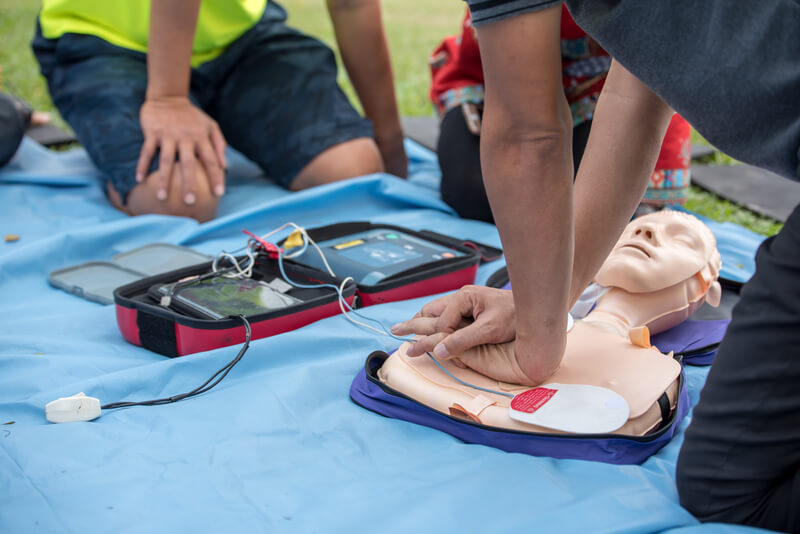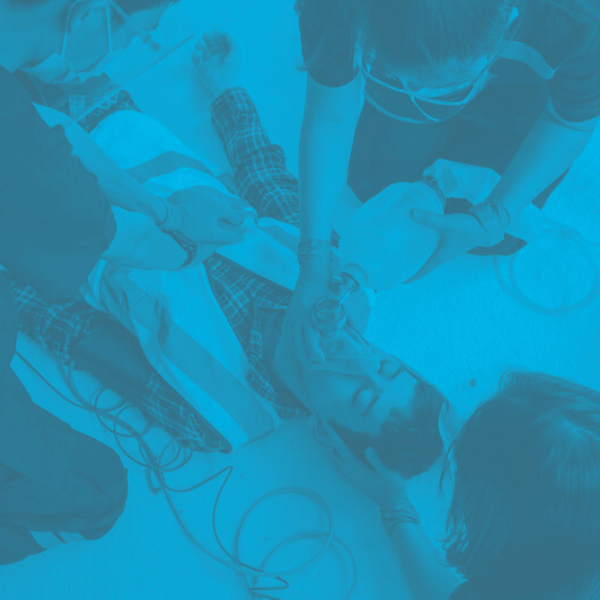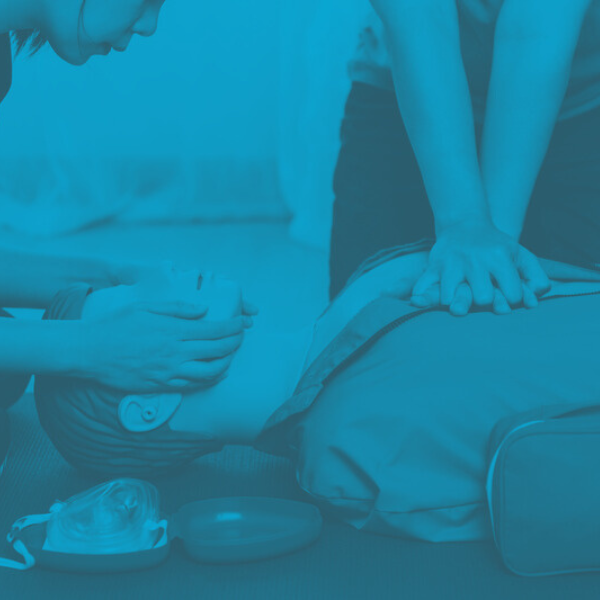What is advanced cardiovascular life support (ACLS) Training?
What is advanced cardiovascular life support (ACLS) Training?

by Greta Kviklyte
Life Saver, AMC
Co-authored by Kim Murray, RN, M.S.
posted on Oct 14, 2025, at 12:40 pm
Advanced Cardiovascular Life Support (ACLS) is a structured system of evidence-based interventions used to treat cardiac arrest, stroke, and other life-threatening cardiovascular conditions.
It’s guided by international standards set by the International Liaison Committee on Resuscitation (ILCOR), a global body of experts that reviews scientific evidence and publishes consensus guidelines to improve patient outcomes in emergency cardiovascular care.
ILCOR brings together leading resuscitation councils from around the world to evaluate research, identify best practices, and establish treatment algorithms that healthcare organizations and training programs follow globally. These guidelines ensure that ACLS training reflects the most current, science-backed methods for managing cardiac emergencies.
We offer Online CPR and BLS Certification
The core purpose of ACLS training is to teach clinicians how to:
- Recognize and respond to life-threatening emergencies
- Manage airways and ventilation
- Interpret cardiac rhythms accurately
- Administer emergency medications
- Lead resuscitation teams effectively
- Apply standardized algorithms for cardiac arrest, bradycardia, tachycardia, and stroke
ACLS training equips you with both the science and the structure to save lives when the heart stops or rhythm goes haywire. It teaches you to recognize the first signs of ventricular fibrillation, coordinate CPR, defibrillation, and medication administration in a team setting.
These courses are particularly valuable if you work in:
- Emergency medicine
- Intensive care units (ICUs)
- Cardiac care units
- Pre-hospital settings (EMS/paramedics)
- Operating rooms or post-anesthesia care
Even if you’re not leading a code, ACLS training ensures you know how to support your team and improve outcomes, reduce errors, and leading with confidence.
What to Expect in Advanced Cardiovascular Life Support (ACLS) Training Class
 Advanced Cardiovascular Life Support training is a focused, intensive course designed to prepare healthcare professionals for the most serious cardiovascular emergencies. It blends essential theory with hands-on practice, teaching you not just what to do, but how and why to do it.
Advanced Cardiovascular Life Support training is a focused, intensive course designed to prepare healthcare professionals for the most serious cardiovascular emergencies. It blends essential theory with hands-on practice, teaching you not just what to do, but how and why to do it.
Most ACLS courses take 1–2 days to complete and are available in a variety of formats:
- In-person, often held in hospitals or training centers for hands-on practice and live instruction
- Online, for flexible, self-paced learning that fits your schedule
- Blended, combining online coursework with an in-person or virtual skills assessment
Before enrolling, you’ll need a current BLS certification, a completed pre-assessment, and familiarity with ACLS algorithms so your course provider can esnure you’re starting from a solid foundation. ACLS builds directly on BLS skills, such as high-quality CPR, AED use, and basic rhythm recognition, before helping you step into the advanced techniques clinicians need during emergencies. You’ll learn to:
- Recognize and manage cardiac arrest, stroke, and life-threatening arrhythmias
- Perform airway management and deliver effective ventilation
- Apply electrical therapy such as defibrillation and cardioversion
- Administer emergency medications safely and appropriately
- Lead or support a resuscitation team, communicating clearly and acting decisively
Through case-based learning and mega-code simulations, you’ll integrate these skills into realistic, time-sensitive scenarios that mirror the challenges of real clinical environments. Each exercise reinforces the ILCOR-backed treatment algorithms and teamwork principles. After you pass the class, you’ll receive a course completion card, which is valid for two years.
 Skills Taught in ACLS Training
Skills Taught in ACLS Training
ACLS isn’t just about memorizing algorithms — it’s about mastering the hands-on and cognitive skills required to save lives. Here’s what you’ll learn in detail:
1. Airway Management
Maintaining a patient airway is the first step in any resuscitation. Without oxygen delivery, even the best compressions or medications won’t succeed. An ACLS certification course will teach you how to:
- Open and maintain the airway using head-tilt–chin-lift or jaw-thrust maneuvers
- Use bag-mask ventilation (BVM) to deliver rescue breaths with proper technique and timing
- Insert advanced airway devices such as oropharyngeal (OPA), nasopharyngeal (NPA), or supraglottic airways to secure ventilation when spontaneous breathing is absent
- Coordinate airway management with compressions and rhythm management, ensuring oxygenation while CPR and defibrillation continue seamlessly
In real emergencies, airway control becomes critical in cardiac arrest, respiratory failure, or post-intubation care. Knowing how to quickly secure an airway and ventilate effectively can prevent hypoxia, improve perfusion, and increase the likelihood of return of spontaneous circulation (ROSC).
2. ECG Rhythm Recognition
Being able to identify cardiac rhythms quickly and accurately is the key to choosing the right intervention.
ACLS teaches you how to read and interpret electrocardiogram (ECG) strips, focusing on the rhythms that demand immediate action, including:
- Asystole – recognizing a flatline and initiating immediate CPR and medication
- Pulseless Electrical Activity (PEA) – understanding that organized rhythms without a pulse still require CPR and treatment of underlying causes
- Ventricular Fibrillation (VF) and Pulseless Ventricular Tachycardia (VT) – two shockable rhythms that require rapid defibrillation
- Bradycardias and Tachyarrhythmias – identifying slow or fast rhythms and applying appropriate medications or pacing strategies
A misread ECG can lead to the wrong treatment (or no treatment at all), so you need to be able to make these split-second assessments confidently and move immediately to the correct algorithm.
3. Use of Emergency Medications
Pharmacology in ACLS is about knowing what drug to give, when to give it, and why. These medications support circulation, restore rhythm, and address underlying problems during resuscitation. You’ll study the indications, dosages, and timing for key drugs like:
- Epinephrine, which increases perfusion pressure and is administered every 3–5 minutes in cardiac arrest
- Amiodarone to help control refractory VF or pulseless VT
- Atropine for symptomatic bradycardia to increase heart rate
- Adenosine for certain stable supraventricular tachycardias (SVTs)
- Lidocaine as an alternative antiarrhythmic if amiodarone isn’t available
You’ll also learn how these medications interact with electrical therapy and when pharmacologic support should be secondary to high-quality CPR and defibrillation.
4. Effective Team Dynamics and Leadership
ACLS emphasizes that successful outcomes depend as much on team coordination as on clinical skill. You’ll practice how to:
- Assign clear roles and responsibilities so every team member knows their task
- Use closed-loop communication by repeating and confirming instructions to avoid errors
- Maintain situational awareness so the entire team can adapt to changes in the patient’s condition
- Lead with confidence, giving clear commands and maintaining calm under pressure
A well-led team works in unison with one clinician managing the airway, while another performs compressions, and another administers drugs. ACLS training helps you step into any of these roles when the situation calls for it.
5. Simulation and Mega-Code Drills
The capstone of ACLS training is the mega-code, a high-fidelity simulation that tests everything you’ve learned. These realistic scenarios challenge you to:
- Recognize the emergency (e.g., VF, PEA, or stroke)
- Follow the correct algorithm from memory
- Direct a team, giving commands and adjusting interventions in real time
- Deliver CPR, defibrillation, medications, and airway management in the correct sequence
By the end of your ACLS course, you’ll have practiced full resuscitations from start to finish, integrating all of these skills into a seamless, lifesaving response.
How to Prepare for ACLS Training
1. Review Basic Life Support (BLS)
Make sure you’re comfortable with high-quality CPR, proper use of an AED, correct compression-to-breath ratios, and early recognition of cardiac arrest. These are the core skills you’ll draw on during every ACLS scenario. If it’s been a while since your last BLS class, take time to refresh your knowledge and muscle memory.
2. Practice Reading Cardiac Rhythms
Spend time reviewing common arrhythmias using flashcards, practice strips, or rhythm-recognition apps. Familiarity with patterns will help you move through the training more quickly.
3. Familiarize Yourself with ACLS Algorithms
Download or print the key ACLS algorithms for cardiac arrest, bradycardia, tachycardia, post-cardiac arrest care, acute coronary syndromes, and stroke. Study how each one flows so you understand the logic behind every step.
4. Understand ACLS Emergency Medications
Take time to learn the indications, dosages, and timing of critical drugs like epinephrine, amiodarone, atropine, and adenosine. Mnemonics or flashcards can help commit these to memory. Understanding what each medication does — and when to use it — is essential for managing real-time resuscitations.
5. Practice Simulated Scenarios
Finally, run through mock emergencies on your own or with colleagues. Walk through the steps of recognizing a rhythm, initiating CPR, delivering shocks, administering medications, and coordinating team roles.
Common Mistakes to Avoid During ACLS Training
Ignoring Pre-Course Materials
The pre-assessment and study materials are designed to help you identify areas where you need more review before class. Skipping them means walking in unprepared for advanced concepts like rhythm recognition and pharmacology. Completing these materials ahead of time ensures you can focus on applying what you’ve learned.
Memorizing Instead of Understanding
You need to understand the why behind each step so you can adapt when real-life situations don’t match textbook examples. For example, recognizing the underlying cause of pulseless electrical activity (PEA) or adjusting interventions based on patient response requires comprehension, not just recall.
Neglecting Teamwork Skills
If you focus only on clinical steps and neglect team dynamics, even perfect technical execution can fail. Assigning roles, using closed-loop communication, and maintaining situational awareness are just as vital as compressions and medications.
Skipping Simulations
Mega-code simulations are where everything comes together, giving you the chance to practice decision-making, coordination, and timing in a controlled environment.
Do I Need Training for ACLS Renewal?
Yes. ACLS certification expires after two years, and renewal is required to stay current with the latest guidelines and maintain your credentials.
The ACLS recertification course is a streamlined version of the full training, primarily focusing on the latest science and guidelines. To get renewed., you just need a valid ACLS card, up-to-date BLS certification, 28 CPD units, and to complete an approximately refresher 4-hour course.
Start Your ACLS Journey Today
It’s time to take your place as a confident, capable leader in emergency cardiovascular care. Whether you’re earning your certification for the first time or renewing to stay current, Advanced Medical Certification (AMC) makes it easy with flexible, fully online courses built around your schedule.
If you’re ready to take the next step, we invite you to learn more about our ACLS certification course and continue your education with more of our articles



